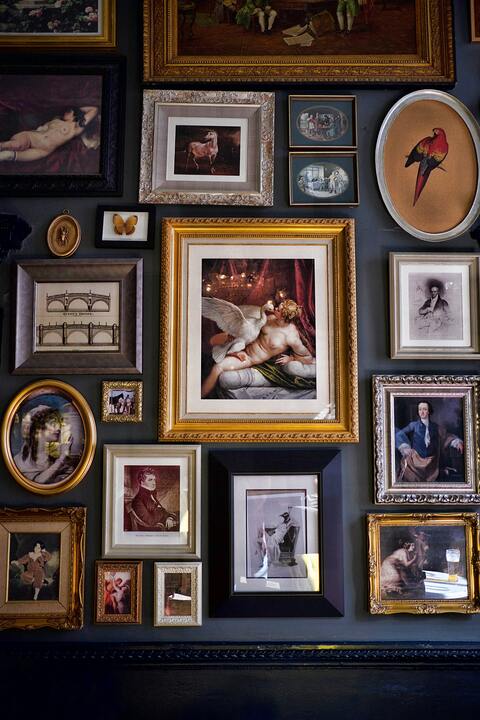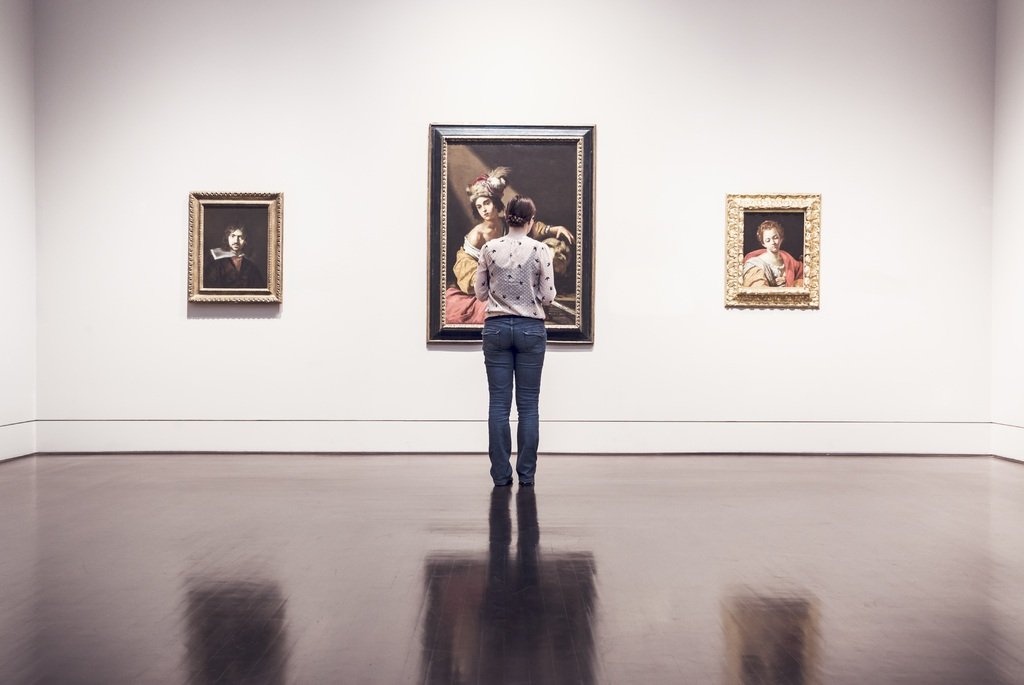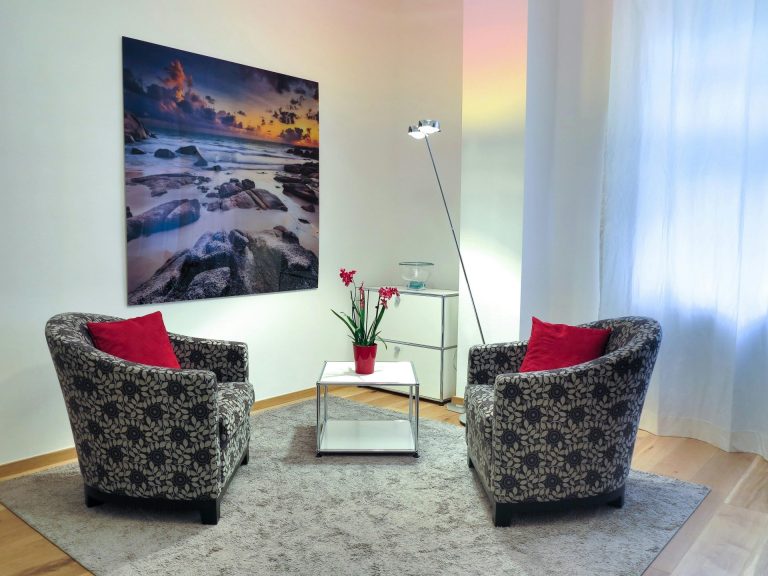How to Choose the Perfect Original Painting for Your Home
Understanding Styles: An Overview of Different Art Styles and Their Appeal
Art comes in many forms, each with its unique style and charm. Understanding different art styles can help you appreciate the diverse expressions of creativity and find pieces that resonate with you. Here’s a fun and easy guide to some popular art styles and why they might appeal to you.
Realism: Capturing Life’s Details
Realism depicts subjects as they appear in everyday life, with meticulous attention to detail. This style is perfect if you love art that feels lifelike and authentic. Realist artists often create stunning portraits, landscapes, and still lifes that make you feel like you could enter the scene.
If you appreciate the beauty of nature or the intricacies of human expression, realism might be your go-to style. Realist paintings can bring a sense of calm and familiarity to your space, making it feel warm and inviting. Plus, they can be great conversation starters, as guests marvel at the artist’s skill in capturing the nuances of their subjects.
Impressionism: A Play of Light and Color
Impressionism is all about capturing the essence of a moment through light and color. Artists like Claude Monet and Edgar Degas are famous for their impressionist works, which often feature vibrant, loose brushstrokes and a sense of movement. This style is perfect for those who love art that feels spontaneous and full of life.
Impressionist pieces can add a burst of energy and brightness to any room. They’re ideal for spaces where you want to create a lively, uplifting atmosphere. Imagine a beautiful impressionist painting of a sunny garden or a bustling city street hanging in your living room, bringing a touch of joy and vibrancy to your home.
Abstract: Embracing the Unconventional
Abstract art is all about expressing emotions and ideas through shapes, colors, and forms, without focusing on realistic representation. This style allows artists to explore their creativity and push boundaries, resulting in unique, thought-provoking pieces. If you enjoy art that challenges the norm and sparks your imagination, abstract art is for you.
Abstract pieces can be incredibly versatile, fitting into both modern and traditional spaces. They can add a touch of sophistication and intrigue to your decor, making your home feel like a contemporary art gallery. Plus, abstract art often invites viewers to interpret it in their own way, creating a personal connection to the piece.
Surrealism: Exploring the Dreamscape
Surrealism delves into the world of dreams and the subconscious, creating fantastical and often bizarre images. Artists like Salvador Dalí and René Magritte are well-known for their surrealist works, which can be both whimsical and unsettling. If you love art that takes you on a journey into the imagination, surrealism is your style.
Surrealist pieces can be great for sparking conversations and adding an element of surprise to your decor. They often feature strange, dreamlike scenes that can make you stop and ponder. Imagine a surrealist painting of melting clocks or floating objects in your home office, inspiring creativity and out-of-the-box thinking.
Pop Art: Celebrating Popular Culture
Pop Art emerged in the mid-20th century, drawing inspiration from popular culture, advertising, and mass media. Artists like Andy Warhol and Roy Lichtenstein turned everyday objects and celebrities into bold, colorful artworks. If you’re a fan of vibrant, playful art that reflects the world around us, pop art is for you.
Pop Art pieces can bring a sense of fun and nostalgia to your space. They’re perfect for adding a pop of color and energy to your decor. Picture a classic Warhol portrait of Marilyn Monroe or a comic book-style painting in your kitchen, making your home feel lively and trendy.
Minimalism: The Art of Simplicity
Minimalism focuses on simplicity and purity of form, often using limited colors and shapes to create a powerful impact. This style is perfect if you appreciate clean lines and a sense of order in your art. Minimalist pieces can create a calm, serene atmosphere, making them ideal for spaces where you want to relax and unwind.
Minimalist art can blend seamlessly with any decor style, adding a touch of elegance without overwhelming the space. Think of a simple black-and-white geometric print in your bedroom, creating a peaceful, uncluttered environment. Minimalism proves that sometimes, less is more.
Expressionism: Conveying Emotions
Expressionism is all about conveying deep emotions through bold colors and dynamic brushstrokes. Artists like Edvard Munch and Wassily Kandinsky created powerful, emotive works that often explored themes of anxiety, passion, and spirituality. If you’re drawn to art that evokes strong feelings and makes a statement, expressionism is your style.
Expressionist pieces can add drama and intensity to your decor, making them perfect for areas where you want to make a bold impact. Imagine a vivid, emotional painting in your dining room, sparking conversations and adding depth to your space. Expressionism is for those who love art with a powerful emotional punch.
Cubism: Breaking Down Perspectives
Cubism, pioneered by Pablo Picasso and Georges Braque, breaks down subjects into geometric shapes and multiple perspectives. This style challenges traditional notions of form and perspective, creating visually intriguing and complex artworks. If you enjoy art that makes you think and see the world in new ways, cubism is for you.
Cubist pieces can add a touch of intellectual sophistication to your home. They’re great for sparking curiosity and encouraging viewers to explore different angles and interpretations. Imagine a cubist painting in your study, inspiring deep thought and creativity.
Exploring different art styles is a journey of discovery that can help you find pieces that truly resonate with you. Whether you’re drawn to the lifelike detail of realism, the vibrant energy of impressionism, or the bold emotions of expressionism, there’s an art style out there that speaks to your unique taste.
Color Harmony: Matching Art with Your Home’s Color Scheme
When it comes to decorating your home, finding the right art pieces can make a big difference. Art adds personality, warmth, and a sense of style to any room. But to achieve the perfect look, it’s important to match your art with your home’s color scheme. Here are some tips to help you create color harmony in your space.

Understanding Your Color Palette
Before you start selecting art, take a good look at your existing color palette. This includes the colors of your walls, furniture, and accessories. Understanding your palette will help you choose art that complements your space and enhances its overall aesthetic.
Start by identifying the dominant colors in your room. These are usually the wall colors and the largest pieces of furniture. Next, take note of the secondary colors, which are found in smaller pieces of furniture, rugs, and other decor items. Finally, identify any accent colors, which are the pops of color found in pillows, throws, and small accessories.
Once you have a clear picture of your color palette, you can begin looking for art that incorporates these colors. This will create a cohesive look that ties the room together beautifully.
Complementary Colors
One of the easiest ways to match art with your home’s color scheme is by using complementary colors. Complementary colors are opposite each other on the color wheel, and they create a vibrant, eye-catching contrast when used together. For example, if your room is decorated in shades of blue, art with orange tones will create a striking, balanced look.
To use complementary colors effectively, look for art pieces that feature accents of the complementary color. This doesn’t mean the entire artwork has to be in that color; even small hints can make a big impact. For instance, a predominantly blue painting with subtle orange highlights can bring out the best in your decor.
Monochromatic Schemes
If you prefer a more subtle and harmonious look, consider a monochromatic color scheme. This involves using different shades and tones of a single color. Monochromatic schemes are calming and sophisticated, making them perfect for creating a serene atmosphere in your home.
To match art with a monochromatic scheme, choose pieces that use varying shades of your primary color. For example, if your room is decorated in various shades of green, look for art that incorporates light, medium, and dark greens. This will add depth and interest to the space without overwhelming it with contrasting colors.
Analogous Colors
Analogous colors are next to each other on the color wheel and tend to create a harmonious, pleasing effect. For example, blue, blue-green, and green are analogous colors. This type of color scheme is great for creating a cohesive, yet dynamic look in your home.
To incorporate art into an analogous color scheme, choose pieces that use these neighboring colors. If your room features blues and greens, look for artwork that includes blue-green or teal. This will enhance the color harmony in the space and create a seamless transition between the elements.
Considering the Mood
The colors in your art can also affect the mood of your space. Warm colors like reds, oranges, and yellows can create a cozy, energetic atmosphere, while cool colors like blues, greens, and purples tend to be calming and relaxing. Consider the mood you want to achieve in each room when selecting your art.
For a lively, inviting living room, opt for art with warm, vibrant colors. If you’re decorating a bedroom or a space meant for relaxation, choose pieces with cool, soothing tones. By aligning the colors in your art with the desired mood, you can enhance the overall ambiance of your home.
Using Neutrals
Neutrals are incredibly versatile and can be paired with almost any color scheme. If your home features a lot of neutral colors like beige, gray, or white, you have the flexibility to choose art in a wide range of colors. Neutral spaces provide a blank canvas that allows colorful art to stand out and make a statement.
When working with neutrals, consider using art as a focal point. Choose bold, colorful pieces that draw the eye and add personality to the room. Alternatively, if you prefer a more understated look, select art in neutral shades that blend seamlessly with your decor.
Balancing Bold Colors
If your home’s color scheme includes bold, bright colors, it’s important to balance these with your art choices. Too many bold colors can overwhelm a space, while too few can make it feel flat. Finding the right balance will create a visually appealing and harmonious environment.
In rooms with bold wall colors, opt for art that features complementary or neutral tones. This will prevent the space from feeling too busy. If your furniture or accessories are brightly colored, choose art that includes similar hues to tie the room together. The goal is to create a balanced look where the colors enhance each other.
Mixing and Matching
Don’t be afraid to mix and match different color schemes and styles. Sometimes, the most interesting and unique spaces come from combining unexpected elements. If you have a bold, eclectic style, let that shine through in your art choices.
Experiment with combining complementary, analogous, and monochromatic schemes. Play with different textures and patterns to add depth and interest to your decor. The key is to have fun and let your personal style guide you. Your home should be a reflection of your personality, and your art choices are a big part of that.
Creating color harmony with your art and home decor is all about understanding your color palette and experimenting with different combinations. Whether you prefer complementary colors, monochromatic schemes, or a mix of styles, there’s a way to make it work for you.
Sizing It Up: Choosing the Right Size of Artwork for Your Space
Choosing the right size of artwork for your space can make a big difference in how your home looks and feels. The right size can enhance your decor, create focal points, and bring balance to your rooms. Here are some tips to help you pick the perfect size for your artwork.
Understanding Proportions
When selecting art for your space, understanding proportions is key. A piece that’s too small can get lost, while one that’s too large can overwhelm. Start by considering the size of the wall where the artwork will hang. A good rule of thumb is that the art should take up about two-thirds to three-quarters of the wall space.
If you’re hanging art above a piece of furniture, such as a sofa or a bed, aim for the artwork to be about two-thirds the width of the furniture. This creates a balanced look and ensures the art is proportionate to the other elements in the room.
For example, if your sofa is 90 inches wide, look for artwork that is around 60 inches wide. This proportion will help the artwork and the furniture complement each other perfectly.
Creating a Gallery Wall
A gallery wall is a fantastic way to display multiple pieces of art in one space. It allows you to mix and match different sizes, styles, and frames to create a unique, personalized display. When creating a gallery wall, start by laying out your pieces on the floor to find the best arrangement.
Use a mix of large, medium, and small pieces to create visual interest. The largest piece should serve as the anchor, with smaller pieces arranged around it. Aim to keep the spacing between pieces consistent, usually about two to three inches apart, to maintain a cohesive look.
Don’t be afraid to play with the layout until it feels right. Once you’re happy with the arrangement, start hanging the pieces, beginning with the central or largest piece and working outward. This will ensure your gallery wall is balanced and visually appealing.

Scaling Art to Your Room Size
The size of the room itself should also influence your choice of artwork. In a large, open room, small pieces can feel lost and insignificant. Conversely, in a small room, very large pieces can make the space feel cramped. Aim for artwork that fits the scale of the room.
For large rooms, consider oversized pieces or even a series of large artworks to fill the space. These can create stunning focal points and add a sense of grandeur to the room. For smaller rooms, opt for medium-sized pieces or a collection of smaller artworks that can be grouped together to create impact without overwhelming the space.
Remember, the goal is to achieve balance and harmony. The right size of artwork will enhance the room, complement the decor, and create a pleasing visual flow.
Considering Vertical and Horizontal Spaces
Think about the orientation of your artwork in relation to the wall space. Vertical pieces can help elongate a room and draw the eye upward, making the space feel taller. They’re great for narrow walls or spaces with high ceilings.
Horizontal pieces, on the other hand, can make a room feel wider and more expansive. They work well above furniture like sofas, beds, or dining tables, creating a cohesive look that ties the room together. When choosing between vertical and horizontal artwork, consider the shape and size of the wall and how you want to influence the perception of the space.
Using Sets and Series
Sets and series of artworks can be a great way to add interest and cohesion to your space. These are collections of pieces that are designed to be displayed together. They can be arranged in a row, grid, or even a more organic, scattered layout, depending on the effect you want to achieve.
Using sets allows you to fill a larger wall space without relying on a single oversized piece. This can create a more dynamic and engaging display. It also gives you the flexibility to add or rearrange pieces over time, keeping your decor fresh and interesting.
Testing with Templates
Before committing to hanging your artwork, it’s a good idea to test the layout with templates. Cut pieces of paper to the size of your artwork and tape them to the wall in the desired arrangement. This allows you to see how the sizes and placements work in the space without making any holes.
Move the templates around until you’re happy with the arrangement. This step can save you a lot of hassle and ensure that the final display looks perfect. It also gives you a chance to experiment with different sizes and orientations to find the best fit for your room.
Mixing Different Sizes
Don’t be afraid to mix different sizes of artwork in the same space. Combining large, medium, and small pieces can create a layered, dynamic look that adds depth and interest. When mixing sizes, think about how the pieces interact with each other and the surrounding decor.
A large piece can serve as a focal point, with smaller pieces complementing and enhancing it. For example, you might have a large central artwork flanked by smaller pieces on either side. This creates a balanced look that draws the eye and makes the entire arrangement feel intentional and cohesive.
Personalizing Your Space
Ultimately, the right size of artwork is one that feels right to you. Your home is a reflection of your personality and taste, so let that guide your choices. Don’t be afraid to break the rules and choose pieces that speak to you, regardless of their size.
Experiment with different arrangements and trust your instincts. Whether you prefer a bold, oversized statement piece or a collection of smaller works, the most important thing is that your art brings you joy and enhances your space.
Choosing the right size of artwork for your space is all about balance, proportion, and personal style. By considering your wall space, room size, and the arrangement of different pieces, you can create a stunning display that enhances your decor and brings your home to life.
Trusting Your Instincts: How to Follow Your Heart When Selecting Art
When it comes to selecting art for your home, trusting your instincts is key. Art is deeply personal, and your choices should reflect your unique tastes and personality. Here’s how to follow your heart when choosing the perfect pieces for your space.

Listen to Your Gut
The first step in trusting your instincts is listening to your gut. When you see a piece of art that you love, pay attention to how it makes you feel. Does it make you smile? Does it evoke a particular memory or emotion? These are the pieces that will truly resonate with you and bring joy to your home.
You don’t need to be an art expert to know what you like. If a piece speaks to you, that’s all that matters. Trust that initial reaction and let it guide your choices. Your home should be filled with things that make you happy, and art is no exception.
Don’t Overthink It
When selecting art, it’s easy to get caught up in questions about style, trends, and whether a piece will match your decor. While these considerations are important, they shouldn’t overshadow your personal preferences. Don’t overthink your choices; go with what feels right.
If you love a particular piece, it will likely fit into your home beautifully, regardless of whether it matches your sofa perfectly or follows the latest trend. Your unique taste will shine through, creating a space that feels authentically you. Remember, your home is your sanctuary, and your art should reflect that.
Embrace Your Unique Style
Your style is a reflection of who you are, and your art choices should celebrate that. Don’t be afraid to embrace what makes your taste unique. Whether you love bold, abstract pieces or delicate, vintage prints, your preferences are valid and worthy of display.
Explore different styles and genres to discover what truly resonates with you. Visit galleries, browse online collections, and take note of the pieces that catch your eye. Your personal style is a blend of your experiences, memories, and emotions, so let that guide your selections.
Create a Connection
Art is not just about aesthetics; it’s about connection. The pieces you choose should tell a story or hold special meaning for you. Maybe a painting reminds you of a favorite place, or a sculpture represents a personal achievement. These connections add depth and significance to your decor.
When you have a personal connection to a piece, it becomes more than just decoration—it becomes a part of your life. Surround yourself with art that speaks to your soul, and you’ll create a home filled with meaningful, cherished pieces.
Trust Your Evolution
Your tastes and preferences may evolve over time, and that’s perfectly normal. Trust that your art collection can grow and change with you. Don’t feel pressured to stick to a specific style or theme. Allow yourself the freedom to explore new interests and incorporate them into your home.
As you grow and experience new things, your perspective on art may shift. Embrace this evolution and let it guide your choices. Your collection will become a dynamic reflection of your journey, constantly evolving and adapting to your changing tastes.
Take Risks
Sometimes, the pieces that make the biggest impact are the ones you didn’t expect to love. Don’t be afraid to take risks and step outside your comfort zone. Experiment with different colors, styles, and mediums to find pieces that surprise and delight you.
Taking risks can lead to exciting discoveries and add a sense of adventure to your art collection. You might find that a bold, unconventional piece becomes a favorite or that mixing styles creates a unique and cohesive look. The key is to be open to new possibilities and trust your instincts.
Enjoy the Journey
Selecting art for your home should be a joyful and fulfilling process. Enjoy the journey of discovering new artists, exploring different styles, and curating a collection that feels uniquely yours. Take your time and savor the experience of finding pieces that resonate with you.
Art is a celebration of creativity and expression, and your collection should reflect that. Let go of any pressure to make the “perfect” choice and focus on what brings you joy. The journey of building your art collection is as important as the pieces themselves.
Share Your Passion
Sharing your passion for art with others can deepen your appreciation and connection to your collection. Invite friends and family to explore galleries with you, discuss your favorite pieces, and share the stories behind your choices. Your enthusiasm for art can inspire others and create meaningful connections.
Hosting art-themed gatherings or simply chatting about your latest finds can add an extra layer of enjoyment to your collection. Art is meant to be shared and enjoyed, so let your passion shine and connect with others who appreciate it.
Trust Yourself
Ultimately, the most important advice for selecting art is to trust yourself. You know what you love, and your instincts are a powerful guide. Don’t let external opinions or trends dictate your choices. Trust that your taste is unique and valuable, and let that confidence guide you.
Your home is a reflection of you, and the art you choose should celebrate your individuality. Trust yourself, follow your heart, and create a space that feels true to you. Your instincts will lead you to pieces that bring joy, beauty, and meaning to your home.
Trusting your instincts when selecting art is about listening to your gut, embracing your unique style, and enjoying the journey. Your art collection should be a reflection of your personal tastes and experiences, so trust yourself and let your heart guide you. Happy art hunting!




